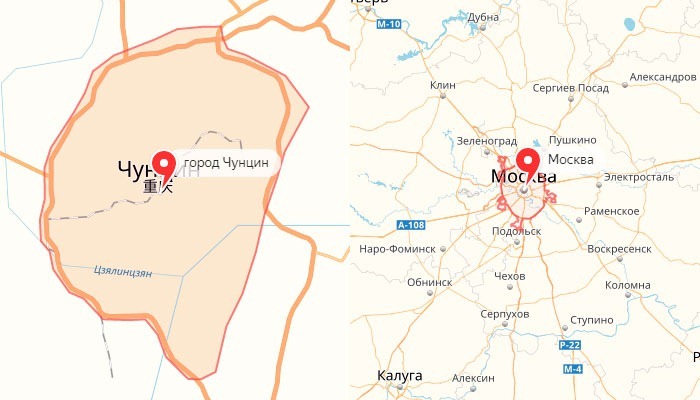More than 50% of the world's population are urban residents. Based on the fact that the planet is home to 7 billion people, there are approximately 50 people for every square kilometer of the earth's surface. However, there are places where the grouping of people is amazing. For example, the largest favela in Rio de Janeiro has a density of 48 thousand people per sq. km.
The largest cities in the world by population
We present you the top 10 largest cities in the world in terms of population. All the data on the number of citizens are taken from Wikipedia, Worldatlas and other open sources and are relevant for 2017.
10. Guangzhou, China
Population: 13.5 million people
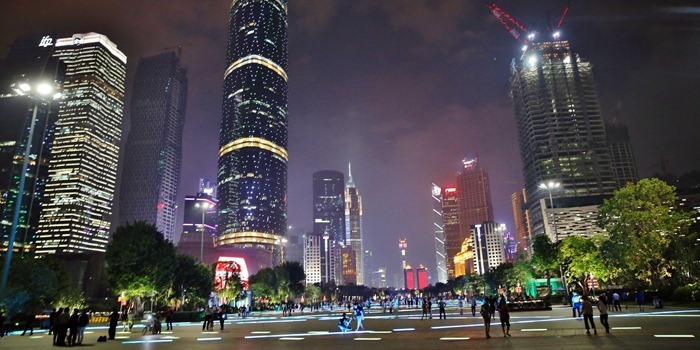 Guangzhou is the educational, economic, technological and cultural center of southern China. Its location on the banks of the Pearl River has contributed to its growth as an important port city.
Guangzhou is the educational, economic, technological and cultural center of southern China. Its location on the banks of the Pearl River has contributed to its growth as an important port city.
Guangzhou's population is replenished mainly by foreign emigrants, as well as illegal migrants from the Middle East, Southeast Asia and Eastern Europe. Thanks to this, the city has earned a reputation as the "capital of the Third World."
9. Tokyo, Japan
Population: 13.7 million people
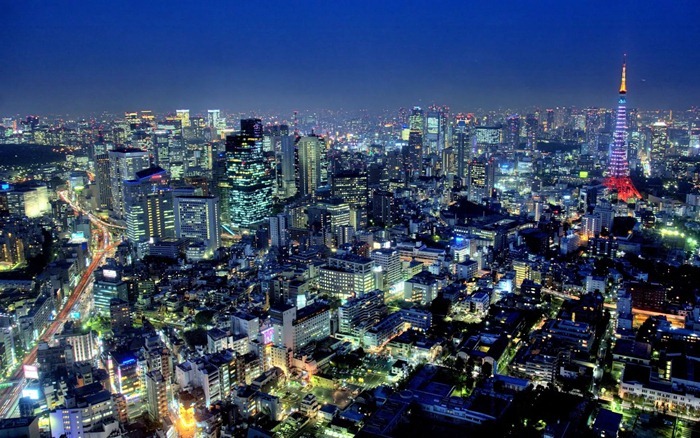 The capital of Japan is renowned for its modern design, dedication to cutting edge technology and crowded streets. In 2010, a demographic boom began in Tokyo and for the first time in its history, the population exceeded 13 million people. The city authorities attributed the population growth to intensive construction of condominiums and an increase in the number of foreigners.
The capital of Japan is renowned for its modern design, dedication to cutting edge technology and crowded streets. In 2010, a demographic boom began in Tokyo and for the first time in its history, the population exceeded 13 million people. The city authorities attributed the population growth to intensive construction of condominiums and an increase in the number of foreigners.
8. Istanbul, Turkey
Population: 14.8 million people
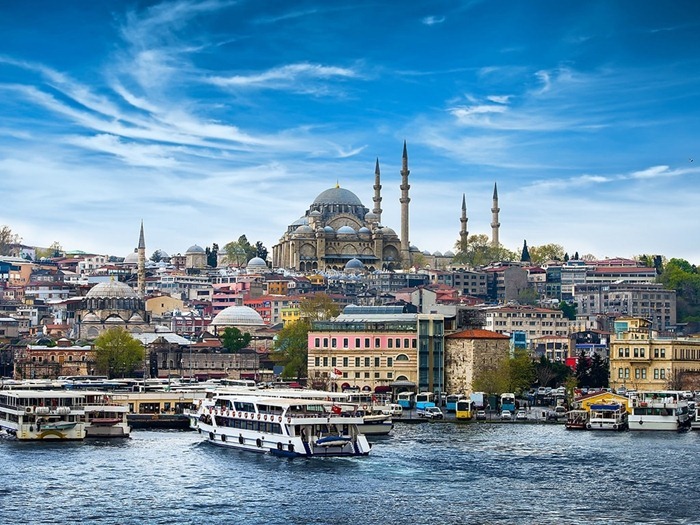 Istanbul is a tourist city that attracts visitors from all over the world. However, it also serves as the focal point of Turkey's economy.
Istanbul is a tourist city that attracts visitors from all over the world. However, it also serves as the focal point of Turkey's economy.
The construction of the new Istanbul airport, which will be able to receive 150 million passengers a year, is in full swing. It should become the largest airport in the world. The opening of the new air harbor is scheduled for 2018. After that, the old Ataturk Airport will be closed.
7. Lagos, Nigeria
Population: 15.1 million people
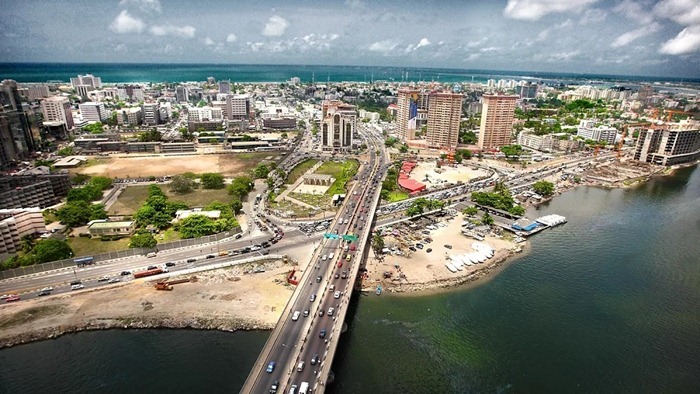 The commercial center of its country and one of the fastest growing African cities. Lagos is also famous for being the center of Nollywood (the Nigerian film industry).
The commercial center of its country and one of the fastest growing African cities. Lagos is also famous for being the center of Nollywood (the Nigerian film industry).
6. Tianjin, China
Population: 15.4 million people
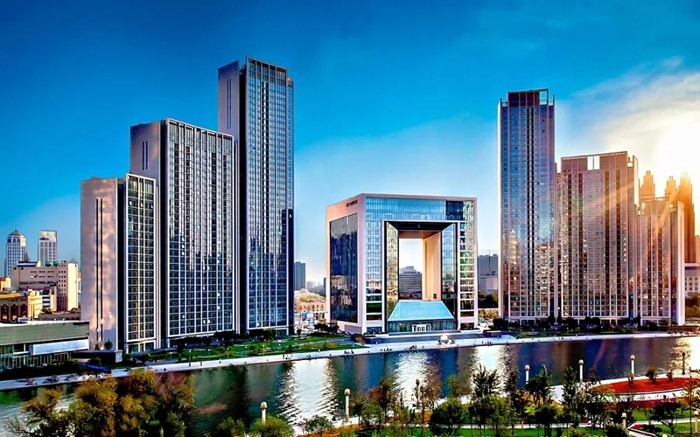 Tianjin is located in the northern coastal zone of China and has over 15 million inhabitants.
Tianjin is located in the northern coastal zone of China and has over 15 million inhabitants.
It is curious that in this port city of China until 1919 there was a Russian post office. Rather, the Russian empire.
5. Delhi, India
Population: 16.7 million people
 Delhi is an ancient city located in the north of India. According to the UN forecast, by 2030 the population of Delhi will grow by almost 10 million people.
Delhi is an ancient city located in the north of India. According to the UN forecast, by 2030 the population of Delhi will grow by almost 10 million people.
4. Beijing, China
Population: 21.5 million people
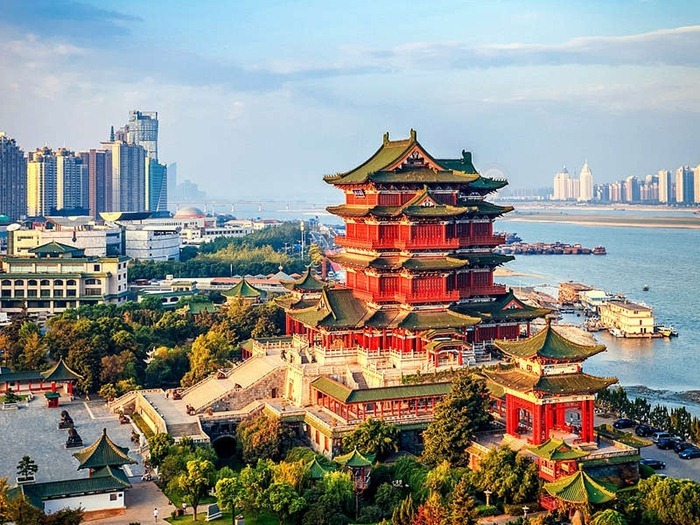 By 2030, the population of the Chinese capital may reach 27 million.And as the cultural center of China, Beijing boasts seven World Heritage Sites on the UNESCO list.
By 2030, the population of the Chinese capital may reach 27 million.And as the cultural center of China, Beijing boasts seven World Heritage Sites on the UNESCO list.
In addition, Beijing has established itself as an industrial sector since the communist revolution of 1949. Automobiles, textiles, aerospace technology and semiconductors are not a complete list of products that are produced in this city.
3. Karachi, Pakistan
Population: 23.5 million people
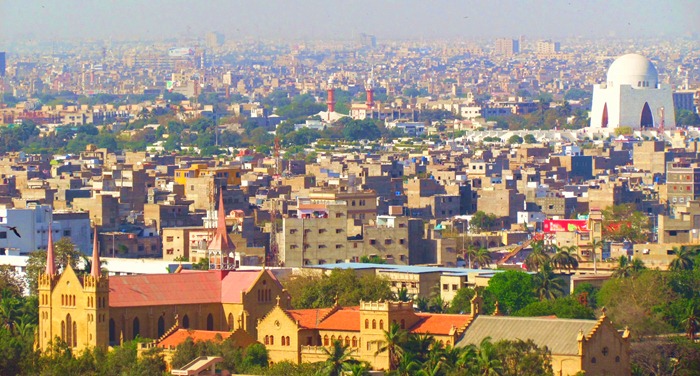 It is hard to imagine that this multimillion-dollar city was once a small fishing village. Currently, Karachi is the economic and industrial center of Pakistan and its population is constantly growing, mainly due to migrants from various countries in South Asia.
It is hard to imagine that this multimillion-dollar city was once a small fishing village. Currently, Karachi is the economic and industrial center of Pakistan and its population is constantly growing, mainly due to migrants from various countries in South Asia.
Karachi is renowned as a center of higher education in South Asia and the Muslim world.
2. Shanghai, China
Population: 24.2 million people
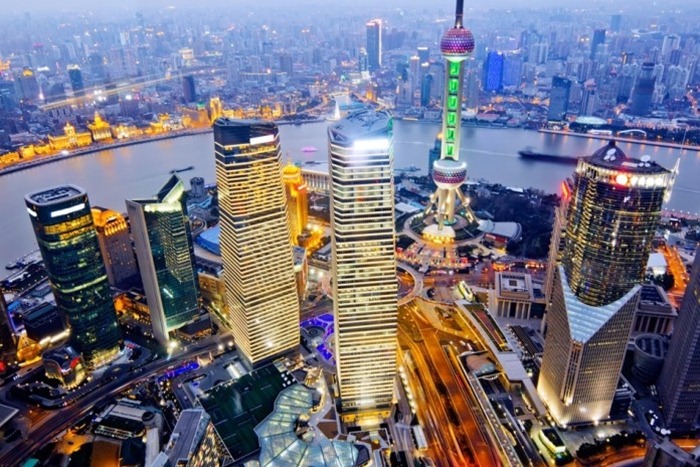 As the second most populous city in China, Shanghai has a reputation for being a crowded metropolis. The city is not only a popular tourist destination, but also home to the busiest container port in the world. Also located in Shanghai one of the tallest skyscrapers in the world.
As the second most populous city in China, Shanghai has a reputation for being a crowded metropolis. The city is not only a popular tourist destination, but also home to the busiest container port in the world. Also located in Shanghai one of the tallest skyscrapers in the world.
Shanghai's population is expected to reach 50 million by 2050, thanks to economic growth and rapid urbanization.
1. Chongqing, China
Population: 53.2 million people
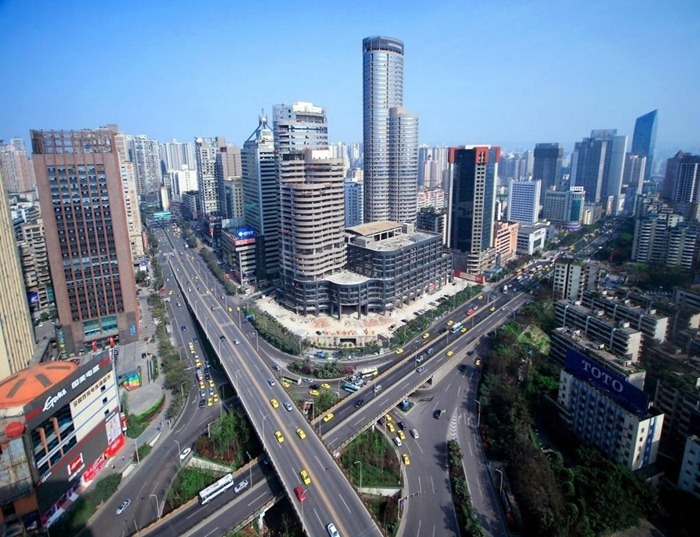 The largest city by population is one of the 5 national central cities of the People's Republic of China (PRC) and is located in the southwest of China.
The largest city by population is one of the 5 national central cities of the People's Republic of China (PRC) and is located in the southwest of China.
This large population is due to the sheer number of migrant workers, many of whom live in Chongqing for less than 6 months a year. At the same time, less than 7 million people live in the urbanized area of the metropolis.
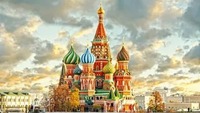 For comparison: in Moscow - the most populated city in Russia - 12.4 million people live. And taking into account the Moscow region - 16 million.
For comparison: in Moscow - the most populated city in Russia - 12.4 million people live. And taking into account the Moscow region - 16 million.
Like the rest of China, Chongqing has a demographic problem. While the workforce is still fueled by economic growth, the effects of the one-family-one-child policy have borne fruit. The workforce is shrinking, while the elderly population is growing exponentially. As one analyst said, China could become the first major country to be old before it was rich.
The largest city in the world in terms of population has a large gap between born boys and girls under 20, and this threatens problems in the future. For example, this can cause a drop in the birth rate and, accordingly, a shortage of labor. But the majority of Chongqing women are unlikely to face the fate of remaining an old maid "with 40 cats."
The largest cities in the world by area
Many Russians are asked "what is the largest city in the world?" proudly answer: "Moscow". And they will be wrong. Although the Russian capital is the largest metropolis in Europe both in area (2,561 km2) and in terms of population, it is inferior in size to overseas million-plus cities.
We present to you the largest cities in the world, if the territory controlled by the city administration is taken as the main parameter.
10. Kinshasa, Congo
Area: 9 965 km²
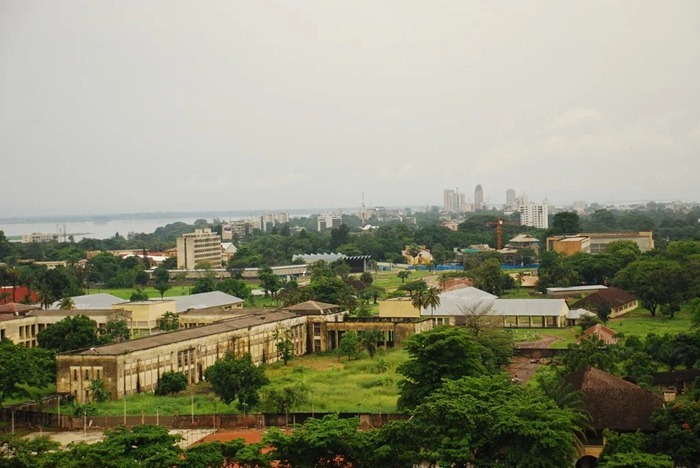 Most (namely, 60%) of the capital of the Republic of Congo is sparsely populated rural areas. However, it is included in the administrative boundaries of the city. Crowded but small urban areas are located in the west of the province.
Most (namely, 60%) of the capital of the Republic of Congo is sparsely populated rural areas. However, it is included in the administrative boundaries of the city. Crowded but small urban areas are located in the west of the province.
Kinshasa is one of the cities with the largest French-speaking population (in the first place, of course, Paris). And if the current demographic situation continues, then in 2020 Kinshasa will surpass Paris in terms of the number of inhabitants.
9. Melbourne, Australia
Area: 9 990 km²
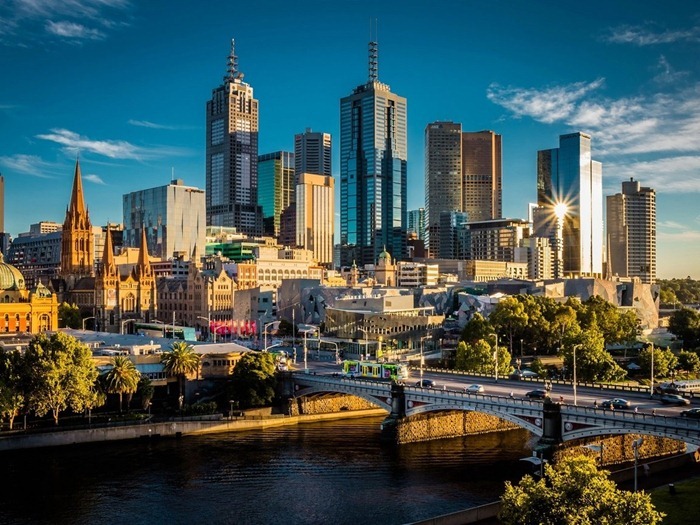 In Australia, one of the most urbanized countries in the world, 89.01% of the population lives in urban areas. Melbourne is home to 4.44 million people, and on this indicator it is only slightly behind the seventh number on the list. But all large Australian cities have one thing in common - they are located close to the coastline.Coastal regions encouraged the growth of the first European settlements, which quickly grew into modern bustling and bustling metropolises.
In Australia, one of the most urbanized countries in the world, 89.01% of the population lives in urban areas. Melbourne is home to 4.44 million people, and on this indicator it is only slightly behind the seventh number on the list. But all large Australian cities have one thing in common - they are located close to the coastline.Coastal regions encouraged the growth of the first European settlements, which quickly grew into modern bustling and bustling metropolises.
8. Tianjin, China
Area: 11 943 km²
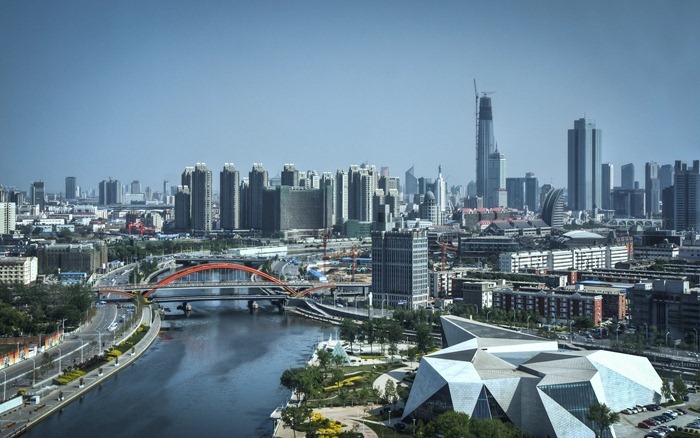 Tianjin, the "commercial gateway" of Beijing, began to develop as a trade center after the construction of the Grand Canal during the Sui Dynasty.
Tianjin, the "commercial gateway" of Beijing, began to develop as a trade center after the construction of the Grand Canal during the Sui Dynasty.
The city especially grew during the reign of the Qing dynasty, and during the existence of the Republic of China. The fastest growing sector of the urban economy is the Tianjin seaport.
Moreover, Rosneft and the China National Oil and Gas Corporation agreed to build an oil refinery in Tianjin. The signing of the construction schedule became known back in 2014. The start-up of the plant is scheduled for 2019.
7. Sydney, Australia
Area: 12,367 km²
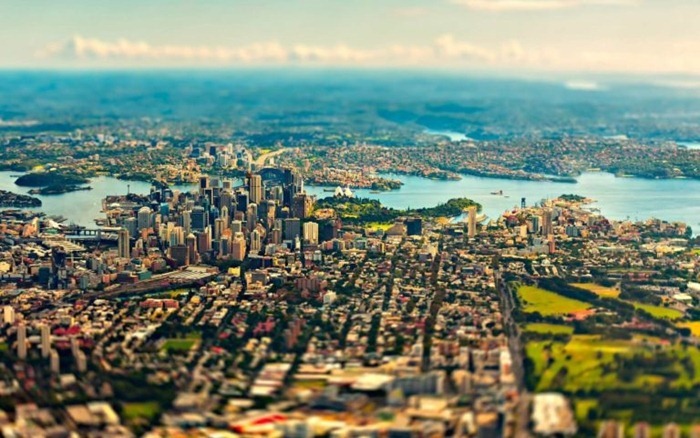 The city of 4.84 million expanded rapidly following the development of the Harbor Bridge. Its residential areas are surrounded by beautiful national parks. And on the extremely indented coastline, there was a place for numerous beaches, bays, coves and islands.
The city of 4.84 million expanded rapidly following the development of the Harbor Bridge. Its residential areas are surrounded by beautiful national parks. And on the extremely indented coastline, there was a place for numerous beaches, bays, coves and islands.
6. Chengdu, China
Area: 12 390 km²
 The city, which was once famous for its brocade, and at one time was the capital of China, in addition to its impressive size, boasts the world's largest statue of Buddha. The height of the Big Buddha, carved into the rock, is 71 meters. According to local residents, "Gradually the mountain becomes a Buddha, and the Buddha becomes a mountain."
The city, which was once famous for its brocade, and at one time was the capital of China, in addition to its impressive size, boasts the world's largest statue of Buddha. The height of the Big Buddha, carved into the rock, is 71 meters. According to local residents, "Gradually the mountain becomes a Buddha, and the Buddha becomes a mountain."
5. Asmara, Eritrea
Area: 15,061 km²
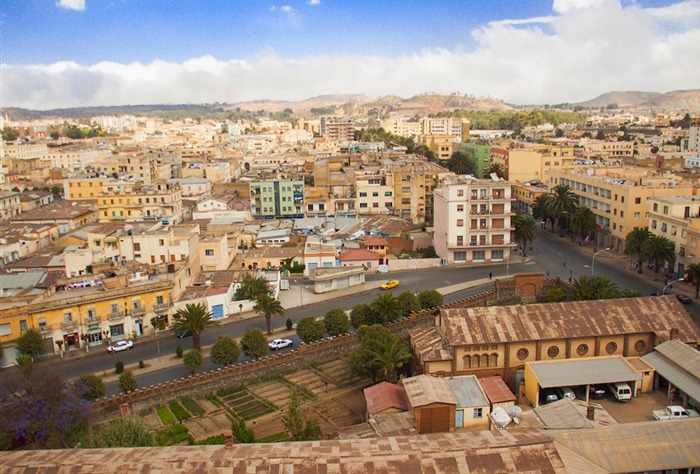 Once the capital of the state of Eritrea, there were 4 villages founded in the 12th century. And now it is the largest city in the country, which is called "New Rome" due to the Italian spirit in architecture. In 2017, Asmara was included in the UNESCO World Heritage List.
Once the capital of the state of Eritrea, there were 4 villages founded in the 12th century. And now it is the largest city in the country, which is called "New Rome" due to the Italian spirit in architecture. In 2017, Asmara was included in the UNESCO World Heritage List.
The name of the metropolis was previously pronounced as Asmara - "blossoming forest" in translation from the Tigrinya language.
4. Brisbane, Australia
Area: 15,826 km²
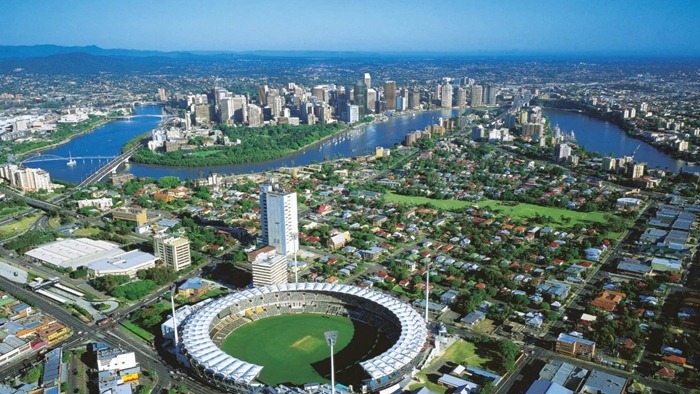 The administrative center (and once the capital) of Queensland has not always been a city. It was "assembled" from 20 separate municipalities and acquired the status of a city in 1925.
The administrative center (and once the capital) of Queensland has not always been a city. It was "assembled" from 20 separate municipalities and acquired the status of a city in 1925.
Brisbane is now the fastest growing Australian city, and at the same time one of the most multinational in the world.
3. Beijing, China
Area: 16 411 km²
 The capital of China is home to over 20 million inhabitants. The Beijing metropolitan area is divided into circles that are located between concentric ring roads. The largest of them is the Sixth Ring Road, it even runs through the satellite cities of the Chinese capital.
The capital of China is home to over 20 million inhabitants. The Beijing metropolitan area is divided into circles that are located between concentric ring roads. The largest of them is the Sixth Ring Road, it even runs through the satellite cities of the Chinese capital.
In 2020, Beijing will host guests and participants of the Winter Olympics, and in 2008, it hosted the Summer Games.
2. Hangzhou, China
Area: 16,847 km²
 During the Southern Song Dynasty, Hangzhou was the most populated city in the world. It is still rather big, the number of citizens exceeded 8 million people.
During the Southern Song Dynasty, Hangzhou was the most populated city in the world. It is still rather big, the number of citizens exceeded 8 million people.
The city is famous for its natural beauty and tea plantations. As the Chinese proverb says: "There is heaven in heaven, and there is Suzhou and Hangzhou on earth."
1. Chongqing, China
Area: 82 403 km²
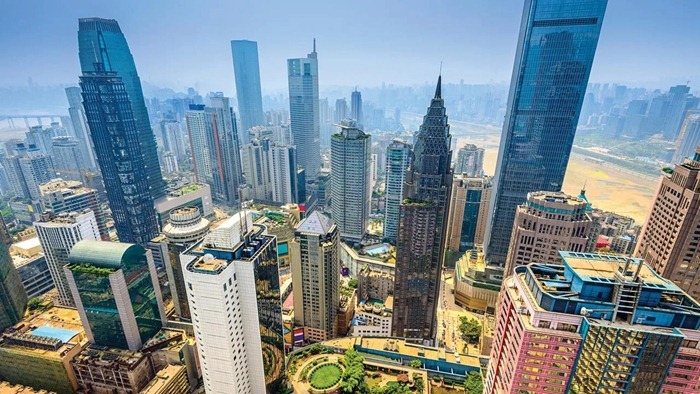 The largest and most populated city in the world is Chongqing. Most of the population lives outside the urbanized zone, the size of which is 1,473 km². And the total area of the city, together with the suburban and rural areas, corresponds to the size of Austria.
The largest and most populated city in the world is Chongqing. Most of the population lives outside the urbanized zone, the size of which is 1,473 km². And the total area of the city, together with the suburban and rural areas, corresponds to the size of Austria.
